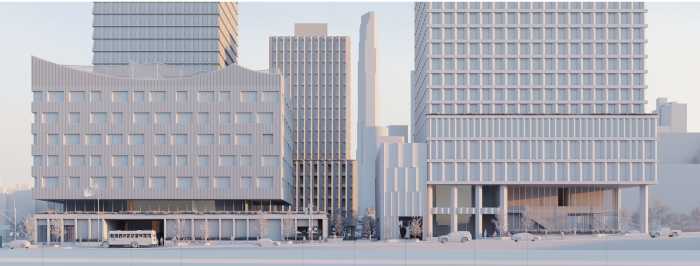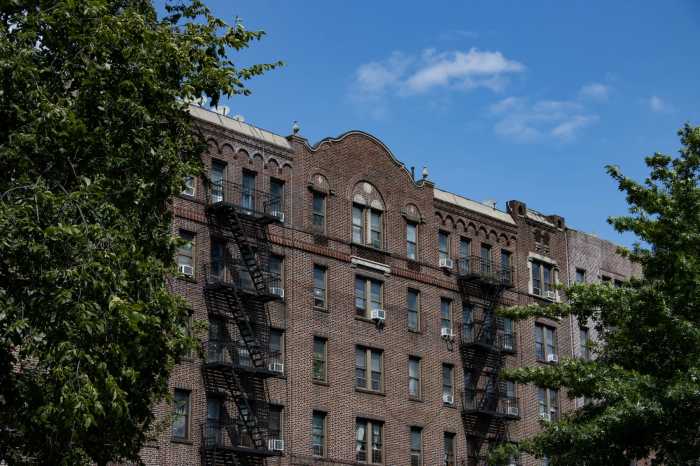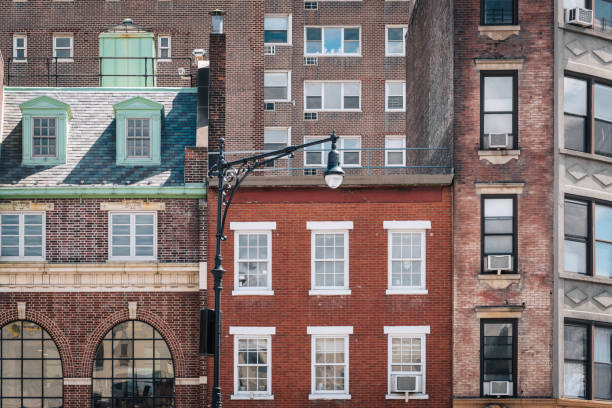Red Hook’s gritty industrial waterfront will become a maritime-themed
tourist attraction, under a new plan for the neighborhood’s piers
unveiled by city officials this week.
“There is no reason why [Red Hook] cannot be a place where people
go on weekends to walk around and shop in a diverse environment,”
Kate Ascher, the executive vice president of infrastructure at the New
York City Economic Development Corporation, said at a Community Board
6 presentation Tuesday evening.
About 100 people listened as five members of the EDC offered the latest
plans for Piers 7-12, a one-mile stretch of Port Authority-owned waterfront
that extends from Red Hook to up to Atlantic Avenue, which is the southern
edge of the planned Brooklyn Bridge Park waterfront development.
Ascher called the now off-limits Red Hook piers a key piece of an ongoing
effort to open up the waterfront.
“We envision a series of waterfront destinations: The East River
Waterfront Park, Brooklyn Bridge Park, Governor’s Island and the
Red Hook piers,” said Ascher.
If developed as open space, the piers would provide open access to the
water for residential neighborhoods such as Cobble Hill, Carroll Gardens
and Red Hook itself.
The gritty neighborhood occupies a central role within the city’s
sweeping plan to weave together two miles of waterfront split between
industrial shipping and the new cruise ship terminals, under construction
on Pier 11 and 12 at Columbia and Coffey streets.
At Tuesday’s presentation, Ascher referred to Red Hook’s Atlantic
Basin, the body of water between Pier 11 and Pier 12 (see map), as the
“sweet spot” for the project’s development and called the
narrow commercial streets leading to those piers “the village green.”
The plan still calls for piers 7, 8, 9a and 9b to remain available for
industrial shipping while the surrounding land would be available for
the tourist-friendly makeover. Ascher said the area’s low-rise Civil
War-era commercial strip could be converted to a mixed-use space with
a maritime museum, a public school, a cafe or a brew-pub run by a relocated
Brooklyn Brewery.
The narrow streetscape would be gussied up with historic plaques and the
streets repaved and widened.
The new Red Hook will look much like the old one she said, adding that
the real differences would be in infrastructure, not aesthetics.
“We aren’t talking about transforming Red Hook into a high-rise
village,” Ascher explained.
Trolleys, new bus routes, above-ground parking lots and water taxi stops
were all discussed as possibilities for creating the neighborhood as public
space inviting to tourists and locals alike.
In order to make good on its plan, the city would have to take over control
of about two miles of Port Authority-owned waterfront and upland properties
in April, 2007 — after the expiration of the PA’s lease with
American Stevedoring Inc, an international cargo shipping company that
now occupies Piers 7-10.
Last year, the company ceded piers 11 and 12 to let the city build a cruise
ship terminal. At the same time, ASI signed a short-term lease for the
remaining piers.
A company spokesman said ASI is not sure how its business — and indeed
the future of a working pier in Red Hook — will be affected if the
waterfront switches from Port Authority to city control.
“I think we all need much more information before we understand what
Ms. Ascher is talking about,” said ASI spokesman Matt Yates. “This
is a multi-billion-dollar transaction [that’s] larger than the Hudson
Yards or the Atlantic Yards.”
Other industrial parties interested in leasing pier space from the city
include Brooklyn Brewery. Co-founder Stephen Hindy left Tuesday’s
meeting eager to renew talks on moving the brewery from its current digs
in Williamsburg to a pier on the Hook.
“We would love to get over there as soon as possible,” he said
on his way out of the crowded meeting.

























